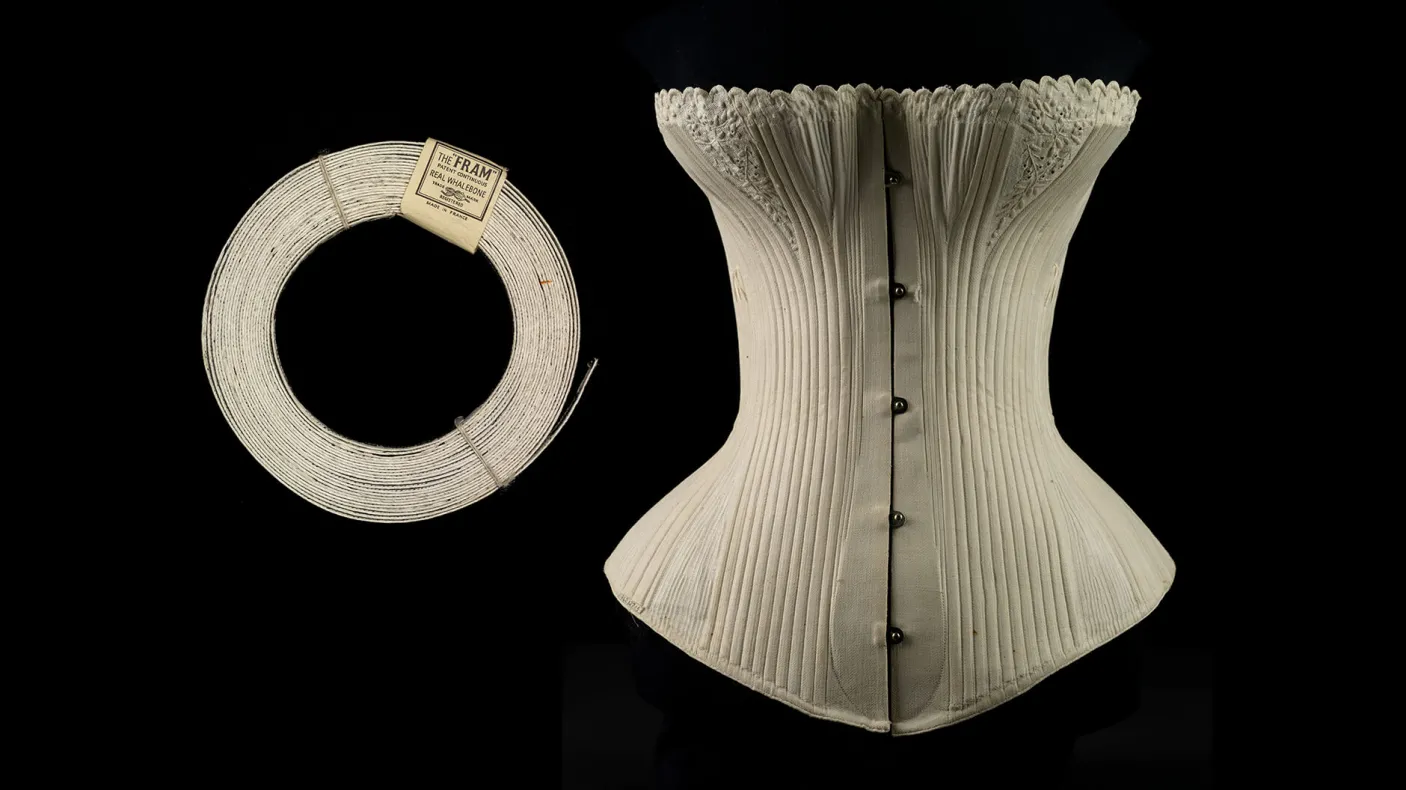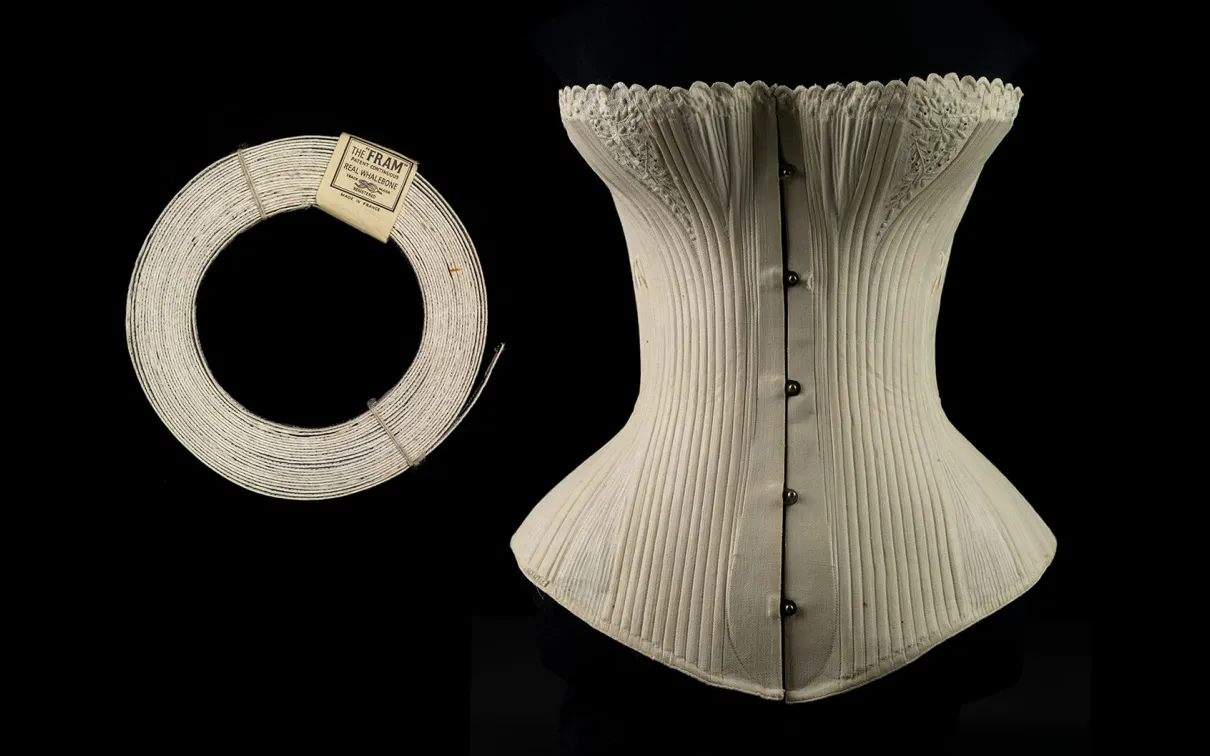A 19th-Century Whalebone Corset
A closer look at an object from a time when fashion fuelled the whaling industry.
Published
Categories
Author
For centuries, whalebone
For centuries, whalebone was used for shaping Western fashion. Whalebone, the keratin ribs in the upper jaws of the whale, was prepared by boiling for 12 hours until it was soft enough to cut into various lengths and dimensions. Each baleen rib was examined by the workman and sorted according to length and quality as he worked. It hardened when cooled.
Baleen had a variety of commercial uses: it was made into stay bones for corsets approximately 12–16 inches long; sets of eight ribs or stretchers 20–40 inches long were used for umbrellas and parasols; it was cut into various sizes and thicknesses for bristle bone used in brushes including for chimney and street cleaning, as well as used for covering whip handles, walking sticks, and telescopes. Leftover shavings were used by upholsterers for stuffing or sent to farmers for fertilizer.
This cotton corset (1883–85) is machine embroidered at the bust with a feminine, floral design. Baleen bones are inserted into channels all around the torso. The front placket is shaped in an S for the desired silhouette. A metal hook-and-eye system enables the wearer to dress more easily before she is laced firmly at the back.
The baleen roll was commercially produced by slicing, splicing, gluing, and encasing the re-formed baleen into one continuous length that could be cut as needed for corsetry and millinery. FRAM (meaning forward), refers to the schooner built for Nansen and Amundsen’s 1893 Arctic expedition, which was designed to withstand the pressure of being frozen in the ice. The FRAM label implies that this baleen roll, like the ship, is strong and can hold its shape under stress. It also assists in dating it to the turn of the 19th century, a time when whalebone for corsets was largely replaced with sprung steel. When worn, real whalebone becomes soft and pliable from body heat, and the corset comfortably moulds to the torso, making real whalebone corsets an expensive luxury.
In 1955, the International Whaling Commission banned the hunting of blue whales in the North Atlantic. The ban was extended to the rest of the world 11 years later.
Alexandra Palmer
Alexandra Palmer is the Nora E. Vaughan Senior Curator of Global Fashion & Textiles at the ROM.


